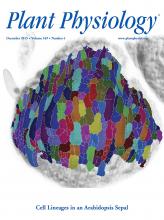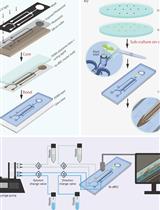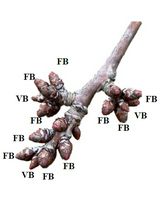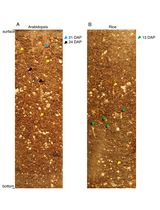- EN - English
- CN - 中文
Determination of the Effects of Local and Systemic Iron Excess on Lateral Root Initiation in Arabidopsis thaliana
局部和系统性铁过量对拟南芥侧根起始影响的测定
发布: 2017年07月05日第7卷第13期 DOI: 10.21769/BioProtoc.2387 浏览次数: 11300
评审: Marisa RosaManjula MummadisettiAnonymous reviewer(s)
Abstract
Root system architecture depends on nutrient availability. A symptom of iron (Fe) toxicity in plants is stunted root growth, yet little is known about the effects of excess Fe on lateral root (LR) development. To better understand how nutrient signals are integrated into root developmental programs, we investigated the morphological response of Arabidopsis thaliana root systems to Fe by testing homogeneous supply and localized Fe supply treatment.
Keywords: Arabidopsis (拟南芥)Background
A localized supply of nutrients regulates lateral root elongation and/or lateral root density in Arabidopsis thaliana. Lateral root formation is affected by nutrients at different developmental stages (e.g., initiation versus elongation) and in a nutrient-specific manner (Li et al., 2011; Giehl et al., 2012). Iron toxicity as a syndrome in plants is typically associated with an excessive amount of the ferrous form (the Fe2+ ion) in the soil (Vigani, 2012). Iron toxicity symptoms vary with cultivars and are characterized by a reddish-brown, purple bronzing, yellow, or orange discoloration of the lower leaves and a stunted root growth. The presence of the Fe2+ ion is increased by low pH and anoxic conditions, and there is an increasing presence in vertically lower strata (Becker and Asch, 2005; Li et al., 2016). We describe a detailed pipeline used for localized iron supply in Arabidopsis grown in vitro which we validated in Arabidopsis (Li et al., 2015a; 2015b and 2016).
Materials and Reagents
- Eppendorf tubes (1.5 ml)
- Sterile tips
- Plastic wrap (Bemis, catalog number: PM996 )
- 130 x 130 x 12 mm square plastic plates (self-made, see Figure 1)
- 130 x 13 x 2 mm glass strip (self-made, see Figure 1)
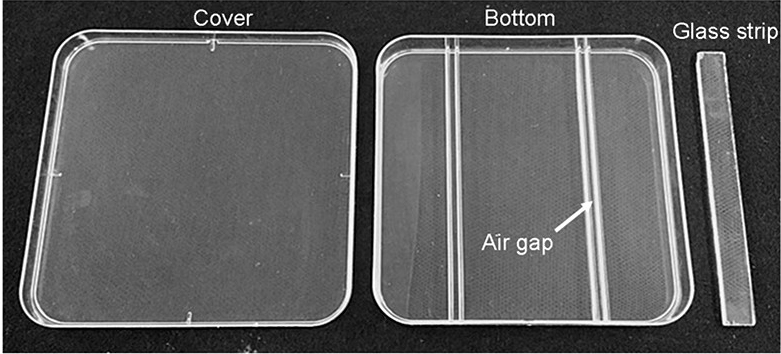
Figure 1. Square plastic plates used for treatment - Arabidopsis thaliana seeds (DR5:GUS lines, Col-0 background)
- Distilled water
- Ethanol (Sinopharm Chemical Reagent, catalog number: 80176961 )
- Sodium hypochlorite (NaClO) (Sinopharm Chemical Reagent, catalog number: 80010428 )
- Sodium dodecyl sulfate, sodium salt (SDS) (Sinopharm Chemical Reagent, catalog number: 30166428 )
- Potassium phosphate monobasic (KH2PO4) (Sinopharm Chemical Reagent, catalog number: 10017618 )
- Sodium nitrate (NaNO3) (Sinopharm Chemical Reagent, catalog number: 10019918 )
- Magnesium sulfate (MgSO4) (Sinopharm Chemical Reagent, catalog number: 10013018 )
- Calcium chloride (CaCl2) (Sinopharm Chemical Reagent, catalog number: 20011160 )
- Ferrous sulfate (FeSO4·7H2O) (Sinopharm Chemical Reagent, catalog number: 10012116 )
- Ethylene diamine tetraacetic acid (EDTA) (Sinopharm Chemical Reagent, catalog number: 10009717 )
- Boric acid (H3BO3) (Sinopharm Chemical Reagent, catalog number: 10004818 )
- Manganese sulfate (MnSO4) (Sinopharm Chemical Reagent, catalog number: LB2208102 )
- Zinc chloride (ZnCl2) (Sinopharm Chemical Reagent, catalog number: 10023828 )
- Copper sulfate (CuSO4) (Sinopharm Chemical Reagent, catalog number: 10008216 )
- Sodium molybdate (Na2MoO4) (Sinopharm Chemical Reagent, catalog number: 10019818 )
- Sucrose (Sinopharm Chemical Reagent, catalog number: 10021418 )
- MES hydrate (Sigma-Aldrich, catalog number: M8250 )
- Agar-agar (Sigma-Aldrich, catalog number: A7002 )
- Seed sterilization solution (see Recipes)
- Normal growth medium (see Recipes)
- Fe-supplemented medium and the control medium (see Recipes)
- Control medium (see Recipes)
Equipment
- Glass bottles (Schott Duran glass bottle, 500 ml capacity or higher)
- Incubation chamber (23 ± 1 °C, under fluorescent lamps at 100 μmol/m2/sec, 16-h-light/8-h-dark)
- pH meter (Mettler-Toledo International, model: FE20K )
- Autoclave (TOMY DIGITAL BIOLOGY, model: SX-500 )
- Refrigerator (Haier, model: BCD-648WDBE )
- Flow hood (Suzhou Antai Air-tech, model: SW-CJ-1F(D) )
- Vortex
- Tweezers
Procedure
文章信息
版权信息
© 2017 The Authors; exclusive licensee Bio-protocol LLC.
如何引用
Readers should cite both the Bio-protocol article and the original research article where this protocol was used:
- Li, G., Zhang, L. and Shi, W. (2017). Determination of the Effects of Local and Systemic Iron Excess on Lateral Root Initiation in Arabidopsis thaliana. Bio-protocol 7(13): e2387. DOI: 10.21769/BioProtoc.2387.
- Li, G., Song, H., Li, B., Kronzucker, H. J. and Shi, W. (2015). Auxin Resistant1 and PIN-FORMED2 Protect Lateral Root Formation in Arabidopsis under Iron Stress. Plant Physiol 169(4): 2608-2623.
分类
植物科学 > 植物生理学 > 植物生长
植物科学 > 植物生理学 > 表型分析
您对这篇实验方法有问题吗?
在此处发布您的问题,我们将邀请本文作者来回答。同时,我们会将您的问题发布到Bio-protocol Exchange,以便寻求社区成员的帮助。
Share
Bluesky
X
Copy link


